Sticky Garlic Pork Bites
Get ready for your new obsession! These Sticky Garlic Pork Bites are about to rock your dinner rotation with their irresistible combination of sweet, spicy, and savory flavors. They’re crispy on the outside, tender on the inside, and coated in a glaze so good you’ll be licking your fingers clean.
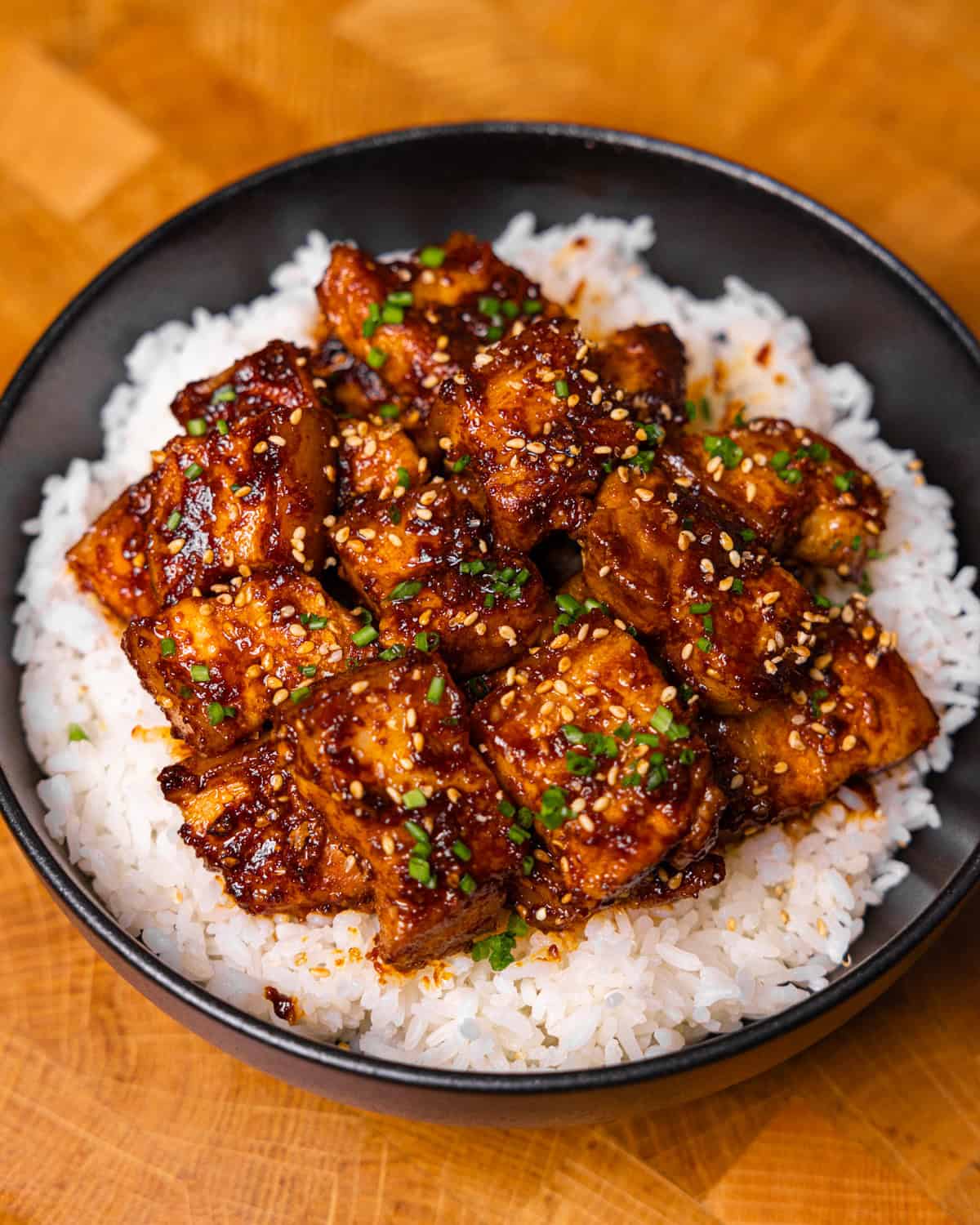
What makes these pork bites special is the Korean-inspired glaze that caramelizes beautifully as it cooks. The gochujang brings that perfect balance of sweet heat while the garlic and ginger add layers of aromatic depth. In just 35 minutes, you’ll have restaurant-quality bites that will make takeout seem completely unnecessary. Trust me, the smell alone will have everyone hovering around the kitchen!
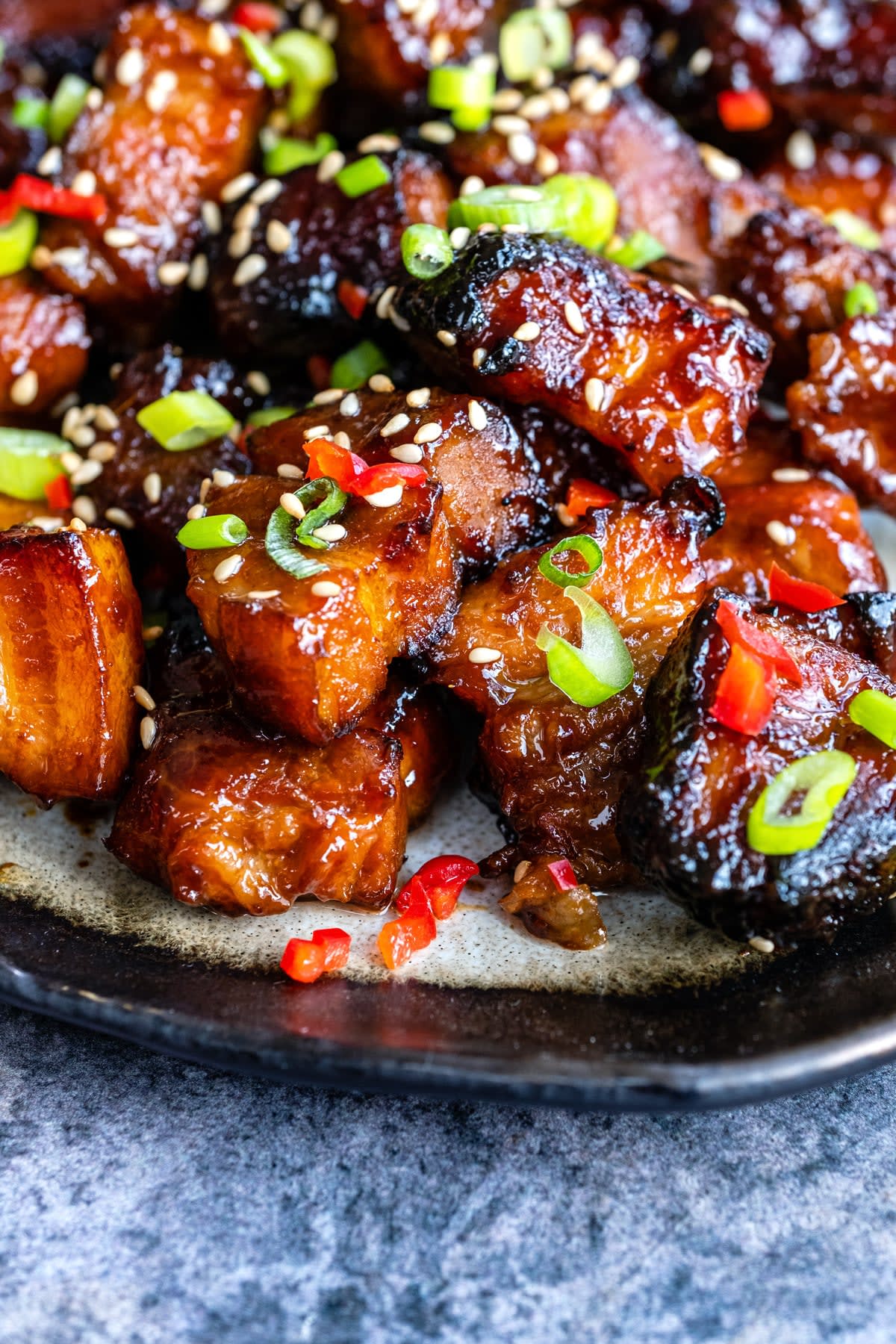
Ingredients
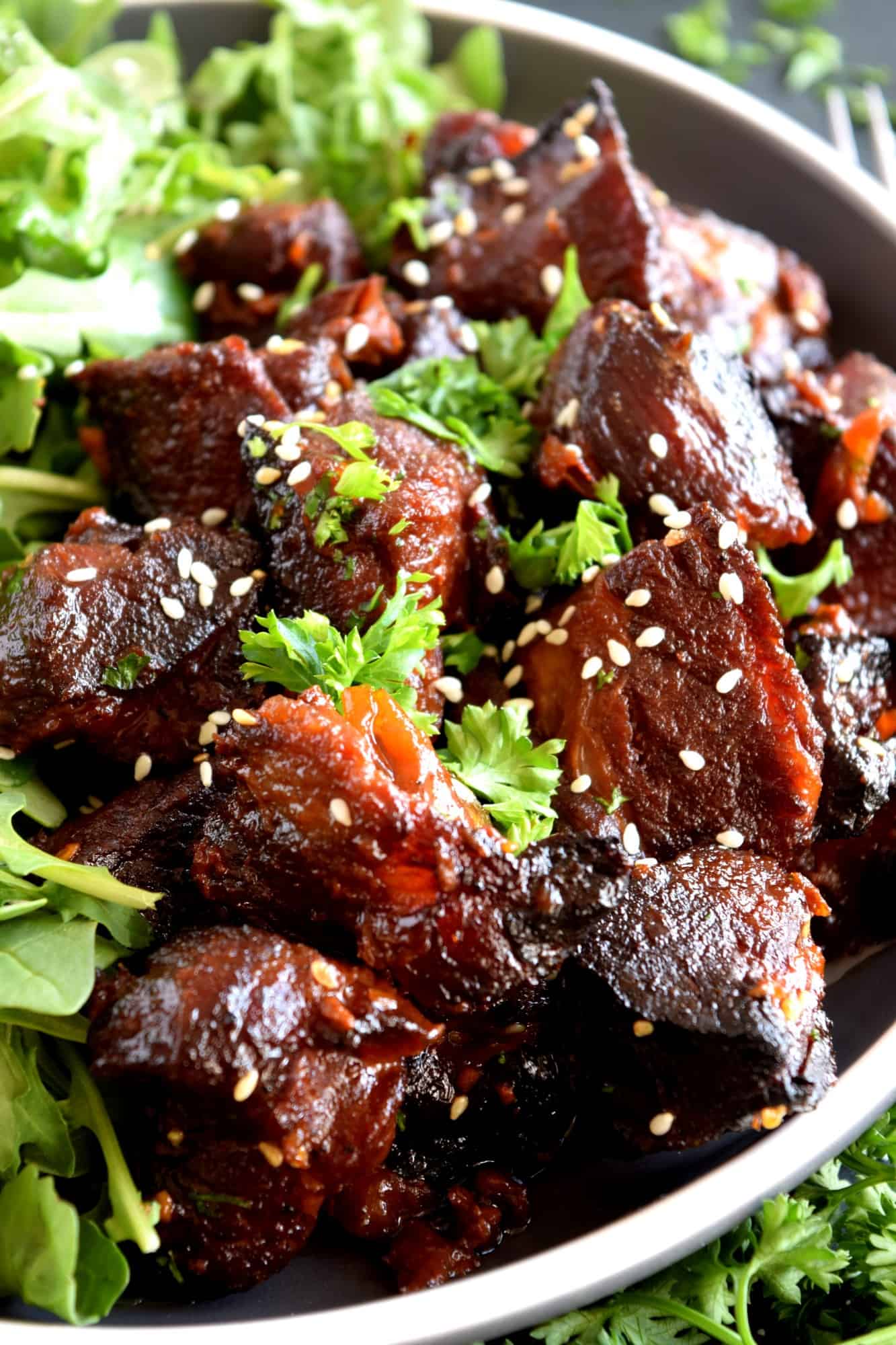
For the pork:
- 500g of pork belly, sliced into bite-sized pieces
- ½ tsp of chilli powder
- 1 tsp of garlic powder
- ½ tsp of onion powder
- ½ tsp of salt
For the Korean Glaze:
- 2 tbsp of Gochujang (Korean Chili Paste)
- 1 tsp of garlic paste
- 1 tsp of ginger paste
- 1 tbsp of dark soy sauce
- 2 tbsp of honey
- 1 tbsp of rice wine vinegar
- 1 tsp of sesame seeds
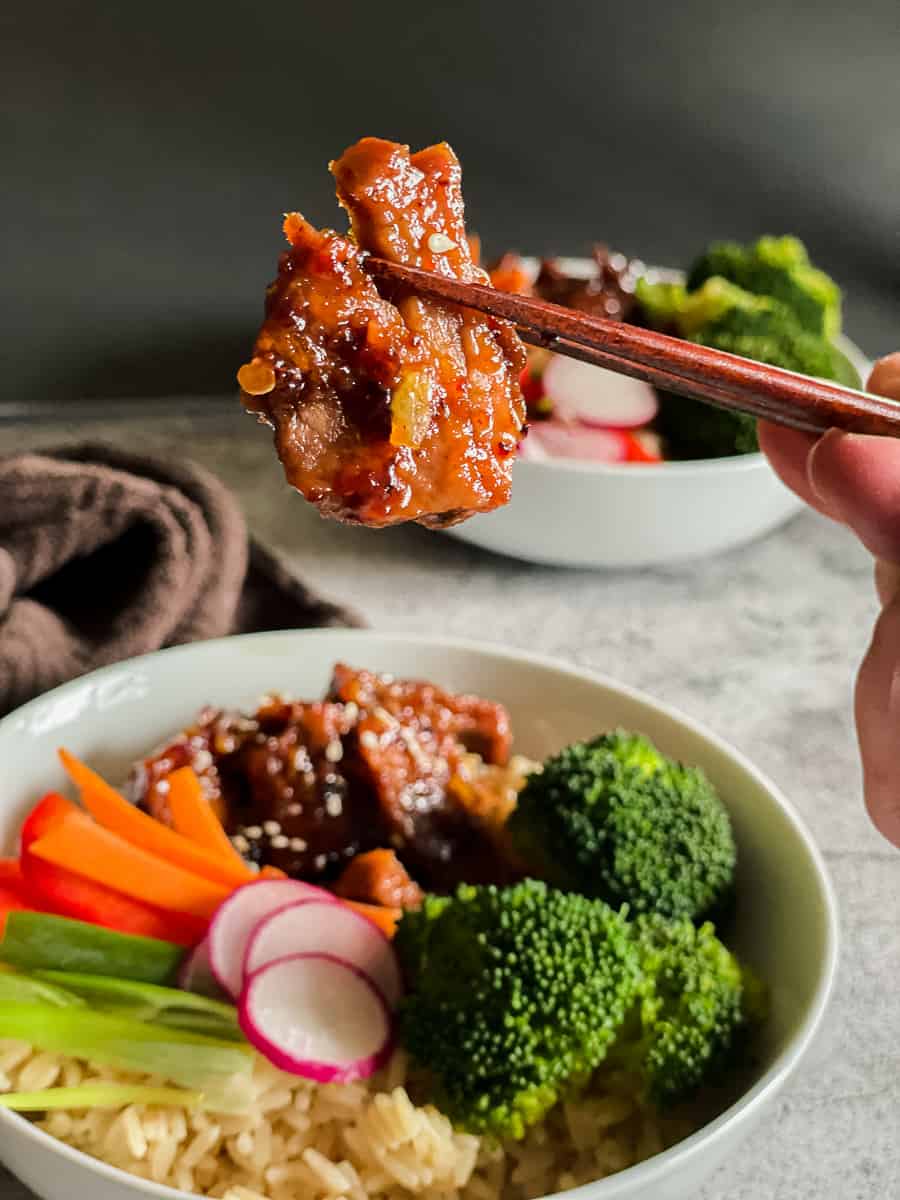
Steps
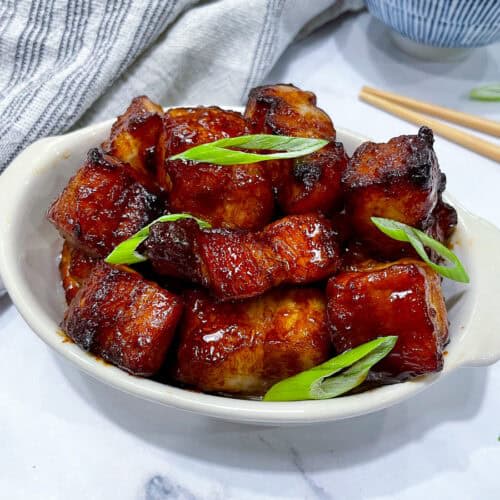
- Cut the pork belly slices into bite-sized pieces, approximately 1-inch (2.5cm) cubes. Pat them dry with paper towels to ensure maximum browning. Combine the ½ tsp chilli powder, 1 tsp garlic powder, ½ tsp onion powder, and ½ tsp salt in a bowl, then sprinkle evenly over pork pieces, tossing to coat thoroughly.
- For the sauce, combine 2 tbsp Gochujang, 1 tsp garlic paste, 1 tsp ginger paste, 1 tbsp dark soy sauce, 2 tbsp honey, 1 tbsp rice wine vinegar, and 1 tsp sesame seeds in a small bowl. Whisk until smooth with no lumps remaining. The consistency should be thick but pourable – if too thick, add 1 tsp water at a time until desired consistency is reached. Set aside.
- Heat a large heavy-bottomed pan or cast iron skillet over medium-high heat until it’s very hot (about 375°F/190°C if using a temperature-controlled pan). Add the pork to the dry pan (no oil needed as the pork belly will release its own fat). Arrange pieces so they’re not touching to prevent steaming. Cook each side for 4-5 minutes or until deep golden brown and crispy. You’ll know it’s ready to flip when the pieces release easily from the pan.
- Once pork is crispy and internal temperature reaches 165°F (74°C), reduce heat to medium-low. Pour the sauce into the pan and toss quickly but thoroughly to coat all pieces. The sauce will bubble vigorously and begin to thicken immediately – keep stirring to prevent burning. Cook for 2-3 minutes until the sauce has reduced to a sticky glaze that clings to the pork. If it thickens too quickly, add 1 tbsp water to loosen.
- Once done, immediately transfer to a serving dish to prevent the glaze from hardening in the hot pan. Serve with a bowl of steamed rice, garnish with additional sesame seeds and sliced chives. For best texture contrast, serve within 5 minutes of cooking while the exterior is still crispy.
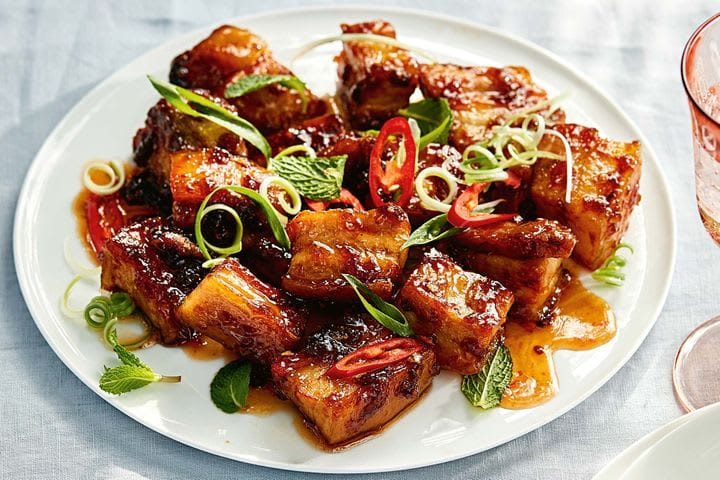
Smart Swaps
- Use pork shoulder instead of pork belly (1:1 ratio) for a leaner option with less fat
- Substitute maple syrup for honey (use 1½ tbsp instead of 2) for a different flavor profile
- Replace gochujang with sriracha mixed with 1 tsp brown sugar if you can’t find Korean chili paste
Make It Diabetes-Friendly
- Replace honey with 1 tbsp monk fruit sweetener plus ½ tsp molasses to reduce carbs by approximately 17g per serving
- Use leaner pork loin instead of pork belly, trimming visible fat (reduces fat content by 60%)
- Serve over cauliflower rice instead of white rice to reduce the meal’s glycemic load by 75%
- Add 1 tbsp apple cider vinegar to the sauce to help moderate blood sugar spikes
- Portion size recommendation: limit to 4 oz (113g) of finished pork bites per serving
Pro Tips
- For extra crispy pork, freeze the seasoned pieces for 15 minutes before cooking
- Let the pork come to room temperature for 10 minutes before cooking to ensure even browning
- Don’t move the pork pieces during the first 3 minutes of cooking to allow proper crust formation
- The sauce will thicken as it cools, so remove from heat when it’s slightly thinner than your desired final consistency